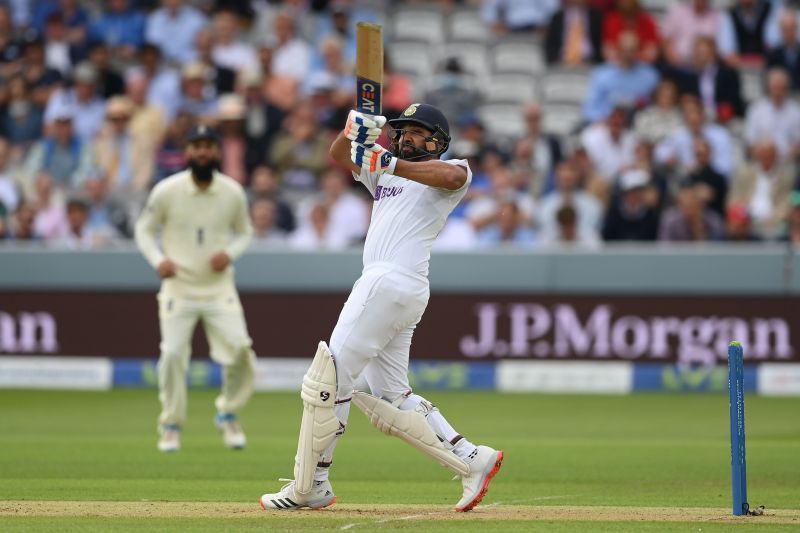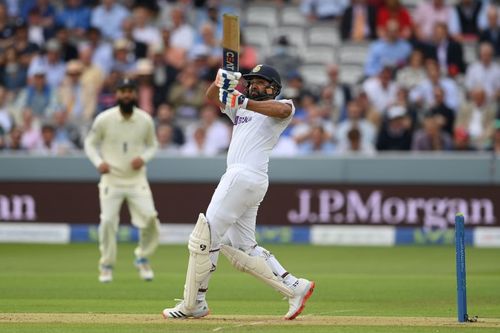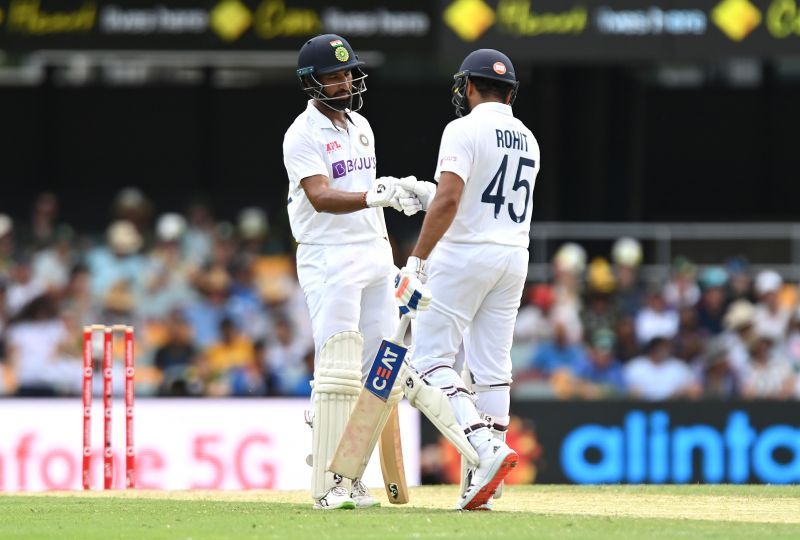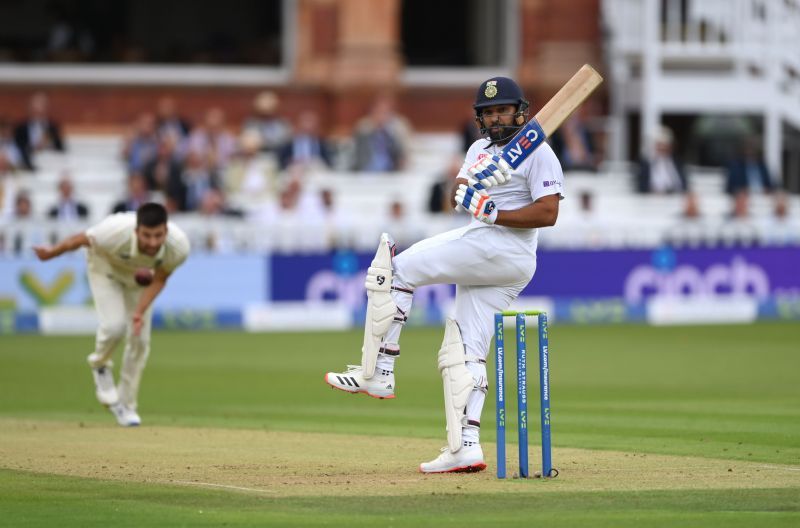
Rohit Sharma - the Test batter may have finally arrived

Back in 2019, Rohit Sharma landed on British shores with a billion people resting their World Cup hopes on him. Prior to that tournament, Rohit had stamped his undeniable quality in bilateral contests in a variety of conditions, meaning that the World Cup in England was treated as the final frontier for Rohit Sharma – the ODI batter.
Over the course of the next month or so, Rohit illustrated just how far he had traversed since being promoted to open in England in the 2013 ICC Champions Trophy. At that juncture, the Mumbai Indians skipper remained someone capable of alternating between the mediocre and the mesmerizing.
Yet, his life changed post MS Dhoni’s decision in 2013 and in 2019, it seemed that his ODI batting career had reached a crescendo, especially after he notched up five tons during the competition. More importantly, it came at a major tournament, meaning that the old adage of Rohit not coming up trumps when the situation demanded most, was quickly thrown by the wayside.
Immediately in the aftermath of the World Cup, India decided to rope Rohit into their Test setup – a decision that embodied the Men in Blue’s approach to stick to an all-format core but also one that provided the opener with his third (or even fourth) shot at redemption in red-ball cricket.
The South Africans, rather unfortunately, bore the brunt of Rohit's wrath in that particular series in India in 2019. The right-handed batter ended the series with 529 runs across four innings – runs that were scored at an average of 132.25 and a mind-boggling strike rate of 77.45.
A series against Bangladesh followed, with Rohit only scratching around for 27 runs in 2 innings. Incidentally, that tally was just two shy of what Umesh Yadav managed in a similar time frame.
Also Read: Umesh Yadav - the forgotten man in India's Test team
And then, as has often been the case with Rohit, he suffered an injury when on the brink of his carpe diem in New Zealand. Several COVID-19 ridden months later, the opener tweaked his hamstring during IPL 2020, meaning that he missed the opening couple of Test matches against Australia in December 2020.

Thus, when he returned to the fold at the Sydney Cricket Ground, Rohit was suddenly battling for his place again. Though his task was made simpler by Mayank Agarwal and Prithvi Shaw’s failures, there was still plenty that he had to prove.
In both Tests in Australia, there seemed to be a marked difference in Rohit’s approach. Not only was he more watchful at the start of his innings, but he also exercised more restraint when playing at deliveries outside off stump – an ailment that has long plagued him.
To an extent, that satiated the thirst of the Indian faithful, for they were seeing Rohit applying himself significantly. Yet, his success in other formats incessantly cast a shadow on his Test returns, meaning that the neat thirties and forties were also dubbed insufficient.
During the World Test Championship final, the aforementioned continued as Rohit withered away promising starts on a surface where every other batter not named Kane Williamson struggled. Hence, his performances started being scrutinized more, considering that he was now getting starts but not converting them – something that hasn’t been the norm for him in white-ball cricket.
Unsurprisingly, there had been a lot of chatter about Rohit’s sustainability before the Test series against England. Not just because England has been a banana skin for most of their batters, but also because Rohit was finding new ways to get out.
Post Trent Bridge, that bandwagon generated a head of steam, especially with the Mumbai Indians captain deploying a compulsive hook stroke and getting caught on the fine-leg fence in the first essay.
Rohit Sharma was brilliant in the first innings at Lord's
At Lord’s, however, there was hardly anything of that sort and even though Rohit couldn’t bag his maiden overseas hundred, he looked every bit the Test cricketer people know exists somewhere but has somehow remained elusive.
Ever since making his Test bow, the opener has been looked upon as someone with a loose defensive technique. Quite often, he has been dismissed while wafting at deliveries outside off stump, whereas on other occasions, his front foot has fallen across and made him susceptible to the LBW.
Apart from that, he also endured a brief period where his bat and pad weren’t as close together, meaning that he got bowled regularly.
In a nutshell, there were numerous ways in which bowlers could plot Rohit’s downfall. More recently, he has actively corrected each of those shortcomings, meaning that he looks as technically adept a batter as any in this current Indian outfit.
Firstly, Rohit has made the adjustment to leave deliveries outside off stump. He has reined in his natural tendencies and has been content not to offer strokes to deliveries that he might ordinarily view as run-scoring opportunities in ODIs and T20Is. Instead, he has waited for the bowler to either over-pitch or bowl short and has then unfurled the booming drive or the pull shot.

Additionally, Rohit has curbed his propensity to fall across his stumps. At Lord’s, there was one instance when he did so against Sam Curran. He nearly played across the line and just about managed to squirt the ball off the inside edge towards fine leg.
However, he rectified it almost instantly, meaning that he then planted his front foot on middle and leg stump – something that helped him access the ball a lot better.
The most telling change, though, has been how he has altered his bat speed and ensured that he hasn’t jabbed at deliveries. For quite a while, that has been a weakness for Rohit but now, he has been able to wait for the ball and play it under his eyes. That, coupled with the fact that Rohit has left the ball pretty well, means that bowlers haven’t gotten full value for the “wicket-taking” balls they have bowled.
In fact, Rohit’s defensive technique has undergone such a startling transformation that he has looked a cut above the rest. While the likes of Ajinkya Rahane and Cheteshwar Pujara have made batting look extremely tedious lately, Rohit has been the complete opposite – showing others that these obstacles can easily be tackled.
Also Read: India's brittle middle order morphing into a huge concern
If raw numbers were to be crunched, Rohit has been in a league of his own for quite some time, averaging more than 45 in Test cricket at the top of the order.
However, the discrepancy between his stats at home and overseas is quite incredible. Even after including his 83 against England at Lord’s, he only averages 29.23 away from home. In India, the average zings up to 79.52, with all of his centuries coming on Indian soil.
Thus, this knock at Lord’s, where he showed impressive control and gauged the situation before picking and choosing his moments to attack, is perhaps even a watershed moment in his Test career.
From an Indian perspective, it is imperative that Rohit continues scoring runs in adverse conditions, for he remains one of India’s greatest match-winners.
Even in Test cricket – an environment where he has apparently not lived up to his billing, he has posted 20 scores in excess of 50 in 69 innings. Remarkably, India have lost only twice whenever Rohit has passed that barrier, indicating how much of an impact he creates.
For years, an asterisk has been attached to Rohit’s record, with plenty even terming him a flat-track Test bully. Now, though, a lot of those murmurs would’ve been silenced.
Not only has Rohit shown that he is capable of adapting his technique and holding his own, he has also portrayed that his appetite for substantial knocks – something that has been an ever-present in white-ball cricket, can be transferred into the Test arena.
Maybe it means that Rohit Sharma – the Test batter has finally arrived. Quite poetically, it has come on English shores – the very location where his journey to unparalleled ODI greatness began and reached a crescendo. Seems like something similar might be happening in a vastly different format too!